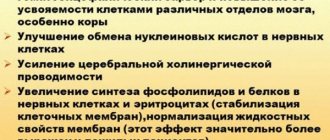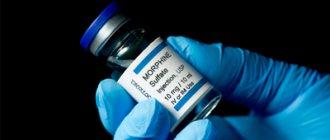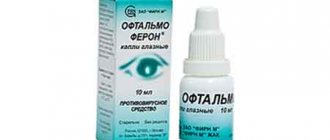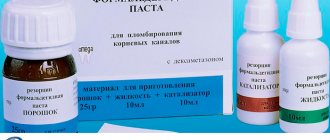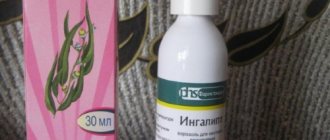Indications for use
- allergic diseases (including urticaria, serum sickness, hay fever, allergic rhinitis, allergic conjunctivitis, angioedema, itching);
- auxiliary therapy of anaphylactic reactions (after relief of acute manifestations by other means, for example, epinephrine / adrenaline /);
- as a sedative in the pre- and postoperative period;
- to prevent or relieve nausea and vomiting associated with anesthesia and/or appearing in the postoperative period;
- postoperative pain (in combination with analgesics);
- kinetosis (to prevent and eliminate dizziness and nausea while traveling by transport);
- as a component of lytic mixtures used to potentiate anesthesia in surgical practice (for parenteral use)
Side effects
- Digestive system: cholestasis, nausea, anesthesia of the oral mucosa, constipation, vomiting, dry mouth, pharynx, nose;
- Central nervous system: drowsiness, sedation, disorientation, impaired visual acuity, nightmares, increased sleep apnea, anxiety, psychomotor agitation, confusion, dizziness; use of high doses – increased convulsive activity (in children), extrapyramidal disorders;
- Hematopoietic system: rarely - agranulocytosis, leukopenia and/or thrombocytopenia;
- Cardiovascular system: bradycardia, decreased blood pressure, tachycardia;
- Sense organs: accommodation paresis, ringing or noise in the ears, blurred vision;
- Dermatological reactions: photosensitivity and/or skin rash;
- Allergic reactions: bronchospasm, dermatitis, urticaria, photosensitivity;
- Others: painful or difficult urination, increased sweating.
Contraindications
- coma or other types of deep depression of the central nervous system;
- simultaneous use of MAO inhibitors and a period of 14 days after completion of their use;
- angle-closure glaucoma;
- alcohol intoxication, acute intoxication with hypnotics, opioid analgesics;
- sleep apnea syndrome;
- occasional vomiting in children of unspecified origin;
- pregnancy;
- lactation period;
- children up to 2 months of age (for parenteral administration);
- children under 6 years of age (for oral administration);
- hypersensitivity to promethazine, other phenothiazine derivatives and any other component of the drug. The drug should be prescribed with caution for acute and chronic respiratory diseases (due to suppression of the cough reflex), open-angle glaucoma, suppression of bone marrow function, diseases of the cardiovascular system, impaired liver and kidney function, peptic ulcer with pyloroduodenal
Release form and composition
Dosage forms of Pipolfen:
- Dragees (coated tablets): light blue, with a shiny surface, lenticular shape, almost odorless or odorless (20 pieces in blisters, 1 blister in a cardboard box or 25 blisters in a cardboard box);
- Solution for intravenous and intramuscular administration: with a green tint or colorless, transparent, almost odorless or odorless (2 ml each in colorless glass ampoules with a blue code ring and a break point, 5 ampoules in blister packs, 2 packs in a cardboard box ).
Each pack also contains instructions for using Pipolfen.
1 tablet contains:
- Active substance: promethazine hydrochloride – 25 mg;
- Auxiliary components: potato starch, stearic acid, gelatin, magnesium stearate, talc, lactose monohydrate;
- Shell: sucrose, ariavit blue, glycerol, talc, gelatin, macrogol 35,000, titanium dioxide.
The composition of 1 ml of injection solution includes:
- Active substance: promethazine hydrochloride – 25 mg;
- Auxiliary components: potassium disulfite – 0.75 mg, hydroquinone – 0.2 mg, sodium chloride – 7 mg, anhydrous sodium sulfite – 1 mg, water for injection – up to 1 ml.
special instructions
With long-term use of the drug, it is necessary to systematically monitor the peripheral blood count and liver function. With extreme caution, especially in high doses, Pipolfen should be prescribed to elderly patients, because This category of patients has an increased risk of developing side effects. When used simultaneously with Pipolfen, analgesics and hypnotics should be prescribed in smaller doses. Pipolfen® should be used under strict medical supervision simultaneously with opioid analgesics, sedatives and hypnotics, anesthetics, tricyclic antidepressants and tranquilizers. Pipolfen® may mask the ototoxic effect (tinnitus and dizziness) of concomitantly used medications. Pipolfen® lowers the seizure threshold. This should be taken into account when prescribing the drug to patients prone to developing seizures, or simultaneously with other drugs with similar effects. As an antiemetic drug, Pipolfen® should be used only for prolonged vomiting of known etiology. With long-term use, the risk of developing dental diseases (caries, periodontitis, candidiasis) increases due to a decrease in salivation. During the treatment period, alcohol consumption is prohibited. During the period of taking Pipolfen, a diagnostic pregnancy test may give a false positive result. A possible increase in blood glucose levels in patients taking Pipolfen® should be taken into account when performing a glucose tolerance test. To prevent distortion of the results of skin prick tests for allergens, the drug must be discontinued 72 hours before allergy tests. Each tablet contains 95 mg of lactose, which should be taken into account if you are lactose intolerant. Use in pediatrics Pipolfen® should be prescribed to children with caution, since this makes it difficult to diagnose the underlying disease. Symptoms of undiagnosed encephalopathy and Reye's syndrome may be mistaken for side effects of Pipolphen. Effect on the ability to drive vehicles and operate machinery During the initial period of using Pipolfen, it is necessary to refrain from driving vehicles and engaging in other potentially hazardous activities that require increased concentration and speed of psychomotor reactions. In the future, the degree of restrictions is determined depending on the patient’s individual tolerance.
Pharmacological properties
Pharmacodynamics
The active component of Pipolfen is promethazine, a phenothiazine derivative. A substance with high antihistamine activity, a pronounced effect on the central nervous system (central nervous system), with a sedative, hypnotic, antiemetic, antipsychotic, hypothermic, preventing/calming effect on hiccups.
Promethazine helps prevent histamine reactions (such as urticaria, itching, etc.), but does not eliminate them. Thanks to the anticholinergic effect, the effect of drying the mucous membranes of the nasal and oral cavities is ensured.
The antiemetic (antiemetic) effect of promethazine is due to its central anticholinergic effect, inhibition of the excitability of the vestibular apparatus and the function of the labyrinth, as well as direct inhibition of the trigger chemoreceptor zones of the medulla oblongata.
The sedative (calming) effect is based on inhibition of histamine-N-methyltransferase and blockade of central histaminergic receptors. Blockade of other CNS receptors - serotonin and acetylcholine - is also not excluded; stimulation of α-adrenergic receptors indirectly reduces stimulation of the reticular formation of the brain stem. Due to the fact that the chemical structure of promethazine differs from the structure of antipsychotic phenothiazines, it has a weaker antipsychotic effect.
In therapeutic doses, Pipolphen has no effect on the cardiovascular system.
The duration of clinical action of promethazine is usually 4–6 hours, in some cases lasting up to 12 hours.
The onset of action of Pipolfen depending on the method of its administration:
- Oral administration (dragées/tablets): after 20 minutes (average 15–60 minutes);
- Parenteral administration (solution): intramuscularly – after 2 minutes; intravenously – 3–5 min.
Pharmacokinetics
After taking Pipolfen pills/tablets orally, promethazine is well absorbed from the gastrointestinal tract. Protein binding ~90%.
Promethazine is actively subjected to presystemic elimination (first-pass effect through the liver), mainly through S-oxidation, with the formation of promethazine sulfoxides and N-demethylpromethazine, the main metabolites excreted in the urine.
The half-life (T1/2) of the main compound is from 7 to 15 hours. It is excreted mainly by the kidneys, and to a lesser extent – with bile.
Promethazine penetrates the blood-brain and placental barriers.
Reviews of Pipolfen
Since the drug belongs to the first generation antihistamines, it is now not used as often as drugs of the second and third generations. In isolated reviews of Pipolfen from patients, a fairly large list of adverse reactions and contraindications is especially noted, which in some cases forces one to stop therapy. Other patients indicate the high effectiveness of the drug.
Experts note the rapid and effective action of promethazine, thanks to which it is successfully used in emergency situations (after intramuscular administration, the effect is observed within 2 minutes). Therefore, Pipolfen solution is included in the mandatory composition of first aid kits for anaphylactic shock. It is important that in therapeutic doses the drug does not affect the function of the cardiovascular system. And its sedative effect is quite significant in the postoperative period. In addition, the use of promethazine in combination with analgesics helps relieve postoperative pain. Long-term use of the drug requires monitoring of peripheral blood count and liver function.
Overdose
Symptoms of promethazine overdose depend on the age of the patient. In children, it is manifested by agitation, anxiety, hallucinations, convulsions, mydriasis and immobility of the pupils, flushing of the facial skin, hyperthermia; in adults – psychomotor agitation, convulsions, retardation. In case of acute overdose, a pronounced decrease in blood pressure, respiratory depression, vascular collapse, and coma are observed.
Since there is no known antidote for promethazine, symptomatic and supportive treatment is recommended. In case of overdose of oral forms of the drug, early detoxification includes gastric lavage and taking activated charcoal. Further, according to indications, it is possible to use antiepileptic drugs. Oral sodium/magnesium sulfate may be beneficial. Dialysis is ineffective.
It may be necessary to take measures to restore adequate pulmonary ventilation by ensuring airway patency and performing assisted or artificial ventilation. Correction of acidosis/electrolyte balance is necessary. Severe arterial hypotension is relieved by parenteral administration of norepinephrine (norepinephrine) or Mezaton. It should be borne in mind that the administration of adrenaline (epinephrine) can paradoxically aggravate arterial hypotension.
Drug interactions
When Pipolfen is used in combination with certain drugs/substances, the following effects may be observed:
- Derivatives of m-cholinomimetics, ephedrine, amphetamine, anticholinesterase drugs, levodopa, guanethidine, dopamine: weakening of their effect;
- Opioid analgesics, hypnotics, anxiolytic (tranquilizers) and antipsychotic drugs (neuroleptics), as well as drugs for general anesthesia, local anesthetics, m-anticholinergic drugs and antihypertensive drugs: enhancing their effects (medical supervision and dose adjustment are required);
- Beta-blockers: increasing the concentration of promethazine in the blood plasma;
- Barbiturates: accelerated elimination and decreased activity of promethazine;
- Prolactin: increasing its concentration;
- Bromocriptine: weakening of its effect;
- Clonidine, ethanol, antiepileptic drugs: increased inhibitory effect of promethazine on the central nervous system;
- Anticholinergic drugs and tricyclic antidepressants: increased m-anticholinergic activity of promethazine;
- Quinidine: increased likelihood of cardiodepressive effects of promethazine;
- Monoamine oxidase inhibitors, phenothiazine derivatives: increased likelihood of developing extrapyramidal disorders and arterial hypotension (simultaneous administration with monoamine oxidase inhibitors is not recommended).
